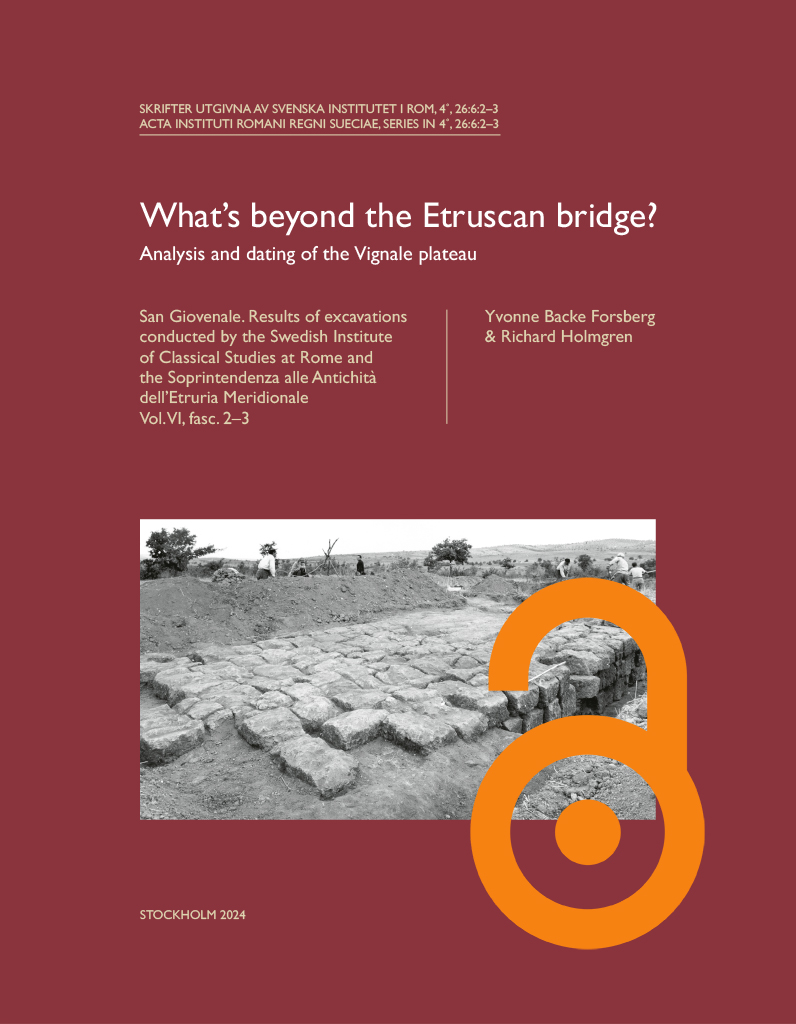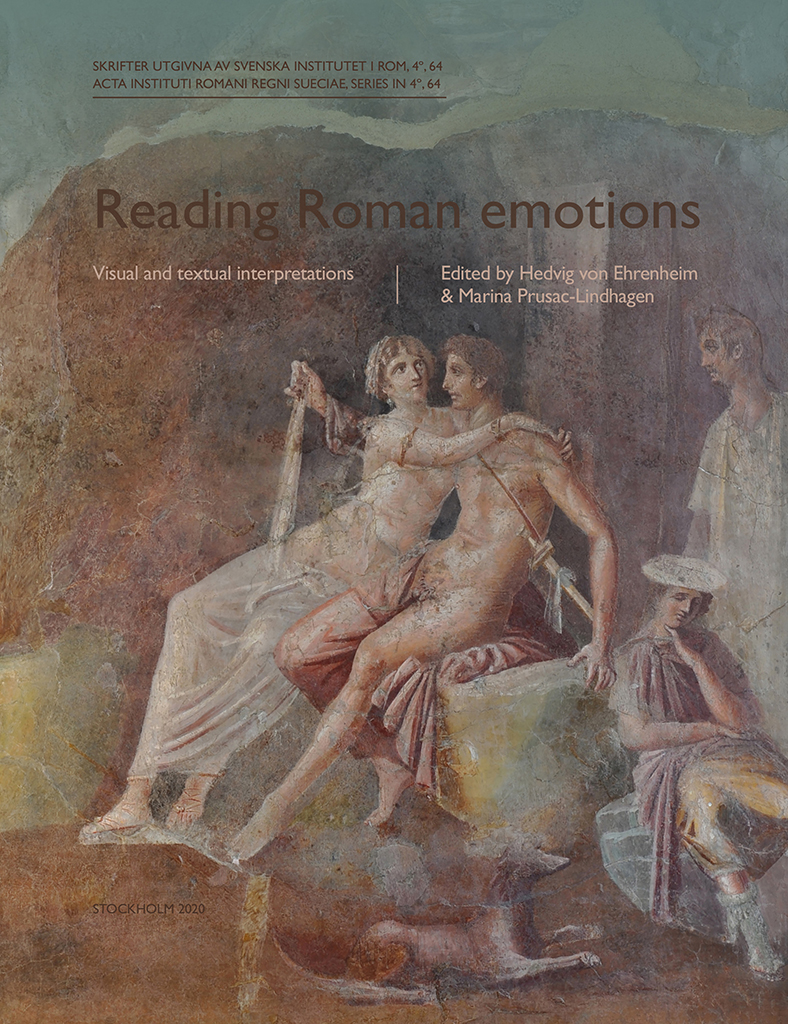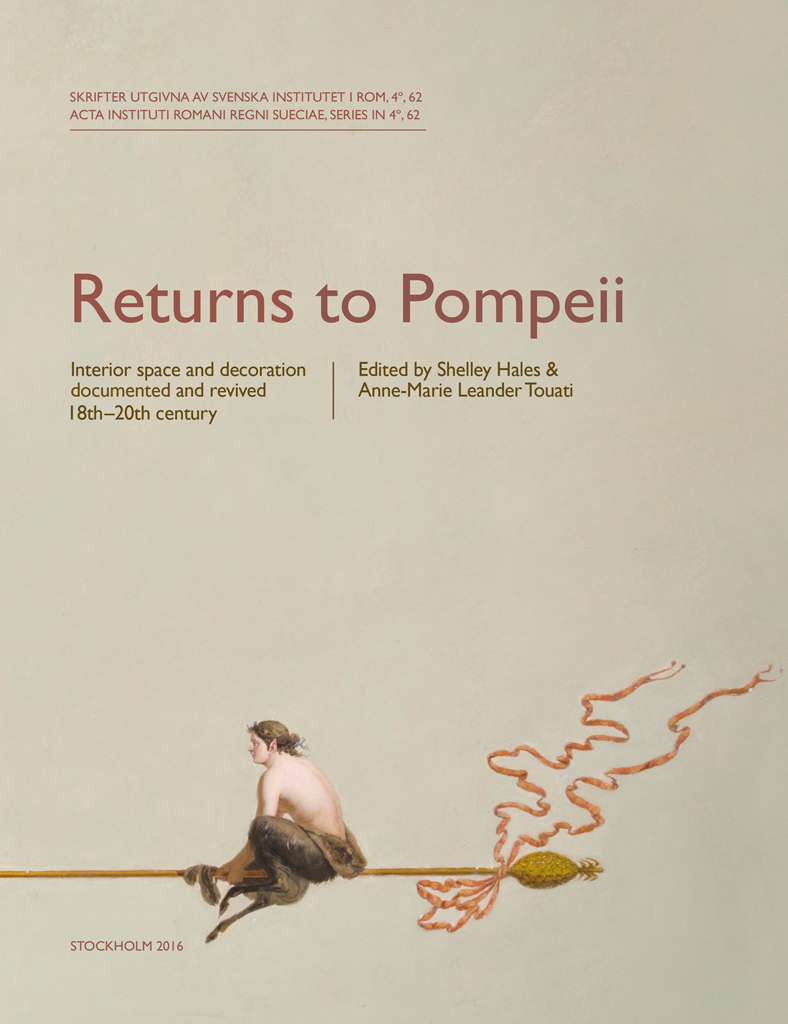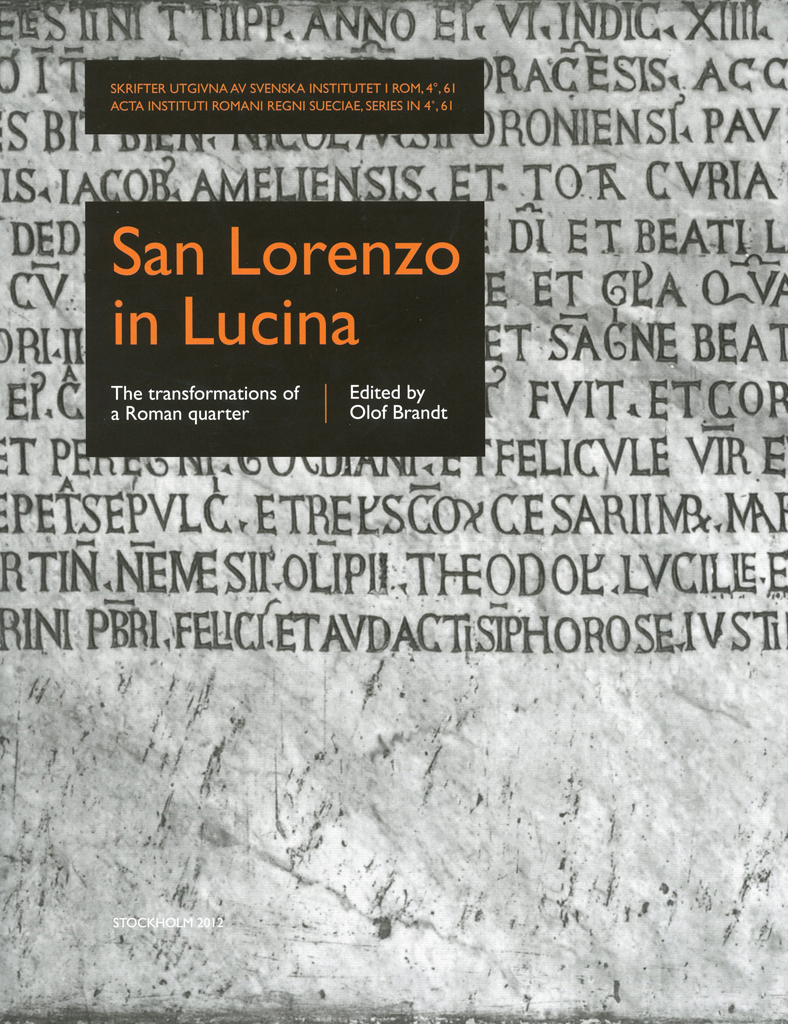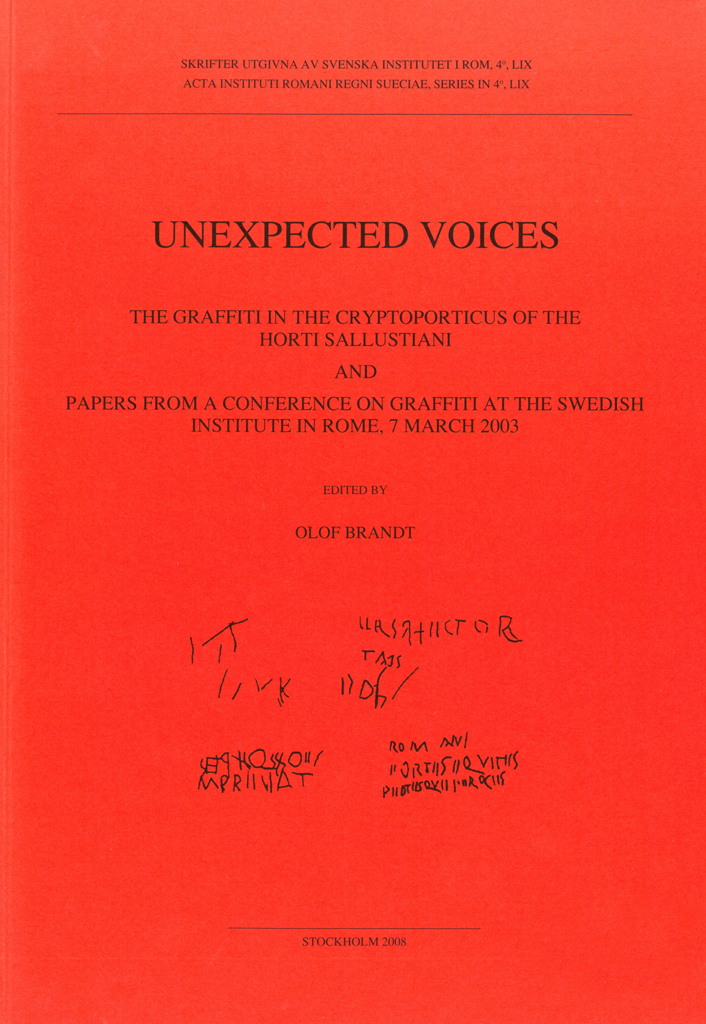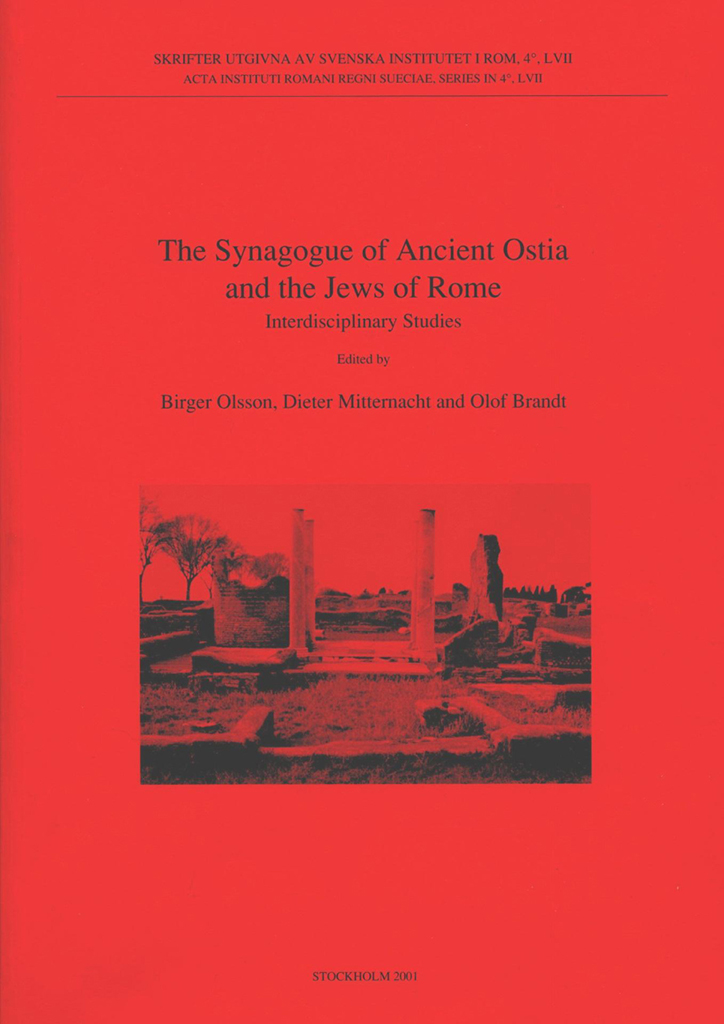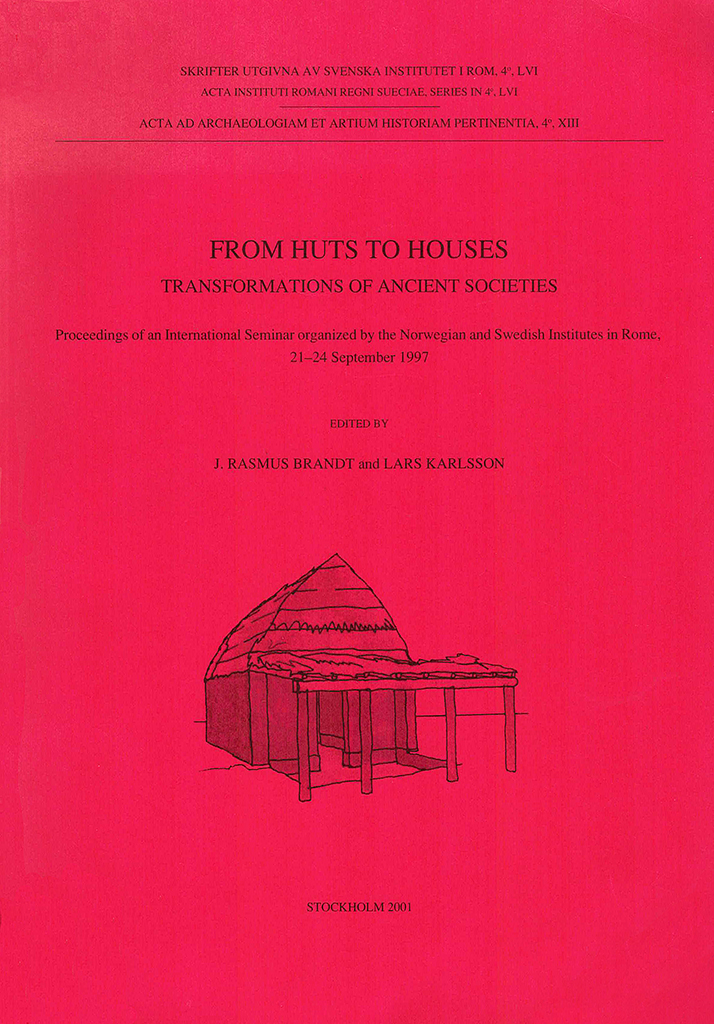Published by the Swedish Institute of Classical Studies in Rome. Distributed by Eddy.se AB. Open access, use links below. San Giovenale vol. 6, fasc. 2–3. What’s beyond the Etruscan bridge? Analysis and dating of the Vignale plateau By Yvonne Backe Forsberg & Richard Holmgren. Stockholm 2024. ISBN: 978-91-7042-188-4 (hardcover: 345 pp.). https://doi.org/10.30549/actarom-4-26-6-2-3 For more information about the San Giovenale-series, see https://ecsi.se/actarom-4-26/ Abstract The Etruscan site of San Giovenale has been excavated periodically since 1956. From the beginning the main focus has been the question of settlement remains. However, a fundamental area within the site had still not undergone the inquiry necessary for a complete understanding of the site as a whole. The Vignale plateau, connected to the main site by an Etruscan bridge, was surveyed and partly excavated in 1959–1960, but not published. The Vignale Archaeological Project (VAP) began new investigations in 2006 that aimed to answer the question of “What’s beyond the Etruscan bridge?” This publication focuses on the initial investigations of 1959–1960, augmented by new ground- and aerial remote sensing surveys. The current volume is divided in six chapters. Through an introduction, and geological/topographic and historical/archaeological settings (Chapters 1–3), the reader achieves a general understanding of Vignale within…
Published by the Swedish Institute of Classical Studies in Rome. Distributed by Eddy.se AB. Reading Roman emotions. Visual and textual interpretations Edited by Hedvig von Ehrenheim & Marina Prusac-Lindhagen Abstract This volume is a contribution to the study of culturally bound emotions and emotional response in ancient Rome. Approaches to the study of ancient emotions and how they were culturally specific, appreciated and understood have recently come to the centre of attention, but not so much in the visual as in the literary culture. When socially and affectively contextualized, the material culture of ancient Rome is a potential goldmine of information with regard to emotions. The chapters in the present volume take the reader on a tour through various cases that demonstrate how emotions were expressed through the arts. The tour starts with a fresh view of how emotion history can be used to recover feelings from the visual culture of the past. Visual culture includes animated performances, and the reader is invited to revel in Roman drama, oratory, and love poetry. Words are often clear, but can images reveal laughter and joy, sadness, grief and mourning, virtue and anger? This volume argues that yes, they can, and through the…
Published by the Swedish Institute of Classical Studies in Rome. Distributed by Eddy.se AB. Roof-tiles and tile-roofs at Poggio Civitate (Murlo). The emergence of Central Italic tile industry By Örjan Wikander, with contributions by Fredrik Tobin Abstract This book has various aims: presenting and discussing the roof-tiles discovered at Poggio Civitate, trying to reconstruct the many roofs they once covered, and outlining the general development of roof-tiles and tiled roofs in Central Italy during the period from c. 650 to 200 BC. Moreover, it also brings the authors earlier studies of skylight-tiles and Archaic simas up to date. Five chapters present typological features of separate tile categories (Ch. I), distribution of terracottas (including the decorative ones) on various roofs (Ch. II), technical issues concerning the production of tiles, their placement on roofs and the collapse of these roofs (Ch. III), plastic and painted decoration (Ch. IV), and the conclusions that can be drawn concerning the chronology of the Poggio Civitate roofs together with a sketch of the introduction and early diffusion of tiled roofs in Central Italy (Ch. V). In one of the appendices letters and signs found on more than three hundred Poggio Civitate tiles are presented and discussed…
Published by the Swedish Institute of Classical Studies in Rome. Distributed by Eddy.se AB. Returns to Pompeii. Interior space and decoration documented and revived. 18th–20th century Edited by Shelley Hales & Anne-Marie Leander Touati Abstract This volume presents a series of case studies that trace the ways in which audiences across Europe have attempted to return to Pompeii by emulating its interior decorations since the city’s rediscovery in the mid-eighteenth century. As such, it is about both the impact of Pompeian antiquity on the present and the reception in the present of that antique past, exploring the variety of ways in which Pompeian domestic space and decoration have been revived (and for what purposes and audiences). The contributions to the volumes compare the ways in which Pompeian wall decorations were interpreted and adapted, given new context and put to serve new social and political purposes, both close to their place of discovery, in the Kingdom of Naples, and in the far-off European periphery, represented by Denmark and Sweden. The many images presented to the reader in this volume confirm colour, fantasy and playfulness, alongside an almost academic orthodoxy of structure, as trademarks of a defined neo-Pompeian style. The volume brings…
Published by the Swedish Institute of Classical Studies in Rome. Distributed by Eddy.se AB. San Lorenzo in Lucina. The transformations of a Roman quarter Edited by Olof Brandt Abstract This volume presents the results of research carried out by the Swedish Institute in Rome in the Roman church of San Lorenzo in Lucina. This research involved the Roman phases of the site and the surrounding quarter. The research began with the 1993–1998 excavation of the baptistery of the Early Christian church, and continued in 2000 with a project which also included other parts, aspects and periods of the site. The papers in this volume shed new light on the Late Roman and post-Antique development of an area which is between Augustan monuments such as the Ara Pacis, the Mausoleum of Augustus, the obelisk and its meridian. The papers include studies on the early 3rd century insula beneath the church, the baptistery and the Early Christian basilica, as well a survey of hagiographic legends, medieval wall-paintings, and other finds such as inscriptions and graffiti, pottery, glass, marble, bones and spolia. Reports on the conservation on fragments of Roman wall-paintings and marble fragments are also included. Contents Barbro Santillo Frizell, ‘Preface’ Olof…
Published by the Swedish Institute of Classical Studies in Rome. Distributed by Eddy.se AB. Via Tiburtina. Space, movement and artefacts in the urban landscape Edited by Hans Bjur & Barbro Santillo Frizell Abstract How can cities integrate historic layers into their urban development? How can tangible and intangible heritages be read, interpreted and utilised in a sustainable city and landscape development? What significance could an ancient road have in this context? These are the overall questions in this book. It contains a number of different approaches to the interaction between the ancient road Via Tiburtina and the surrounding urban landscape east of Rome towards Tivoli, a rich palimpsest of distinguishable interrelated layers created over at least three millennia. One hypothesis being explored is that structures like Via Tiburtina still can determine the morphology of the urban landscape. Settlements, buildings, space, movement and cultural artefacts have therefore come into focus in investigating whether broken connections could be re-established, and thus creating a dialogue between Rome’s earlier epochs and the future. Contents Index map Introduction Hans Bjur & Barbro Santillo Frizell | Ways to urban landscape archaeology Hans Bjur | That’s the way it is Movement Barbro Santillo Frizell | Changing pastures…
Published by the Swedish Institute of Classical Studies in Rome. Distributed by Eddy.se AB. Unexpected voices. The graffiti in the cryptoporticus of the Horti Sallustiani and papers from a conference on graffiti at the Swedish Institute in Rome, 7 march 2003 Edited by Olof Brandt Abstract This volume presents the results of a collaboration between the Swedish Institute in Rome and the Embassy of the United States of America in Rome. The object of the research was a cryptoporticus, part of the ancient Horti Sallustiani, in the area of the American Embassy, and especially the graffiti found on the walls of the cryptoporticus, which were also decorated with paintings. The cryptoporticus, which is dated to the first century AD, was excavated in 1949–1950 and in the 1990s, but the graffiti have never been completely published. In this publication, all the graffiti are discussed and dated. Some belong to Late Antiquity, others were made in the 16th and 17th centuries. The study of these graffiti gives important information about the later fate of the first-century cryptoporticus. Several unpublished fragments of wall-paintings are also presented, and more general historic and archaeological aspects of the cryptoporticus are discussed. Part of the project was…
Published by the Swedish Institute of Classical Studies in Rome. Distributed by Astrom Editions. Dionysos in Etruria. The Ivy Leaf Group By Ingrid Werner, with an introduction by F.R. Serra Ridgway Bibliographical information Ingrid Werner, Dionysos in Etruria. The Ivy Leaf Group (Skrifter utgivna av Svenska institutet i Rom, 4°, 58), Stockholm 2005. Softcover: 118 pp. ISSN 0081-993X. ISBN 9789170421709.
Published by the Swedish Institute of Classical Studies in Rome. Distributed by Astrom Editions. The Synagogue of Ancient Ostia and the Jews of Rome. Interdisciplinary studies Edited by Birger Olsson, Dieter Mitternacht & Olof Brandt Abstract In March of 1997 a research project on the ancient synagogue began at Lund University, Sweden, continuing a tradition of research that has its roots in the 1930s. The project’s title “The Ancient Synagogue: Birthplace of Two World Religions” suggests that Judaism and Christianity existed for a time in close proximity to each other and were shaped by the same particular milieu within the ancient world, namely, the synagogue. The synagogue in ancient Ostia was chosen as an initial case study, since there is evidence that it was built during the first century CE and consequently is one of the earlier synagogues in the Roman world to have been excavated. Olof Brandt presents for the first time a more extensive description of the area outside the city walls where the synagogue was built. Anders Runesson surveys all the material that has been published about Ostia in order to make a new reconstruction of the synagogue’s history in Ostia. Magnus Zetterholm attempts, primarily with the…
Published by the Swedish Institute of Classical Studies in Rome. Distributed by Astrom Editions. From huts to houses. Transformations of ancient societies. Proceedings of an international seminar organized by the Norwegian and Swedish Institutes in Rome, 21–24 September 1997 Edited by J. Rasmus Brandt & Lars Karlsson Abstract The present volume contains 43 of the 43 announced papers and 11 posters presented at an international conference in Rome in 1997. In a cross-cultural context, the papers examine various aspects of transformation processes connected with architectural changes, covering themes such as building types and development, building function, building technology, and finance and organization. Within this framework, the investigations span a long era, extending from the Mesolithic period to modern times, including experimental reconstructions of ancient dwellings. From the geographical and cultural point of view the contributions cover the Middle East and Europe from the Arabian deserts to the Arctic Ocean, though with a slight emphasis on central Italy in the Iron Age. The last article is a translation from Swedish to English of a study on shepherd huts in the Roman campagna made by S. Erixon in 1932, an article often quoted in studies on primitive architecture, but not easily accessible…

